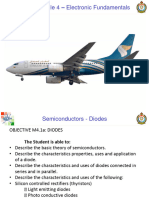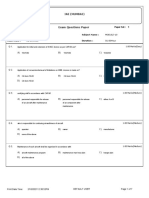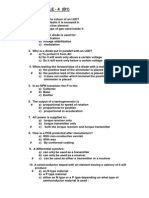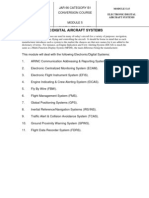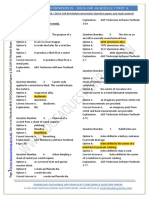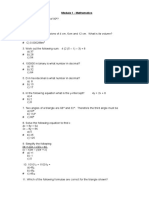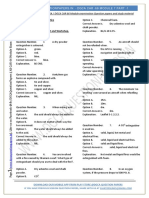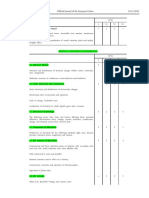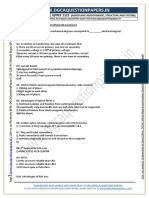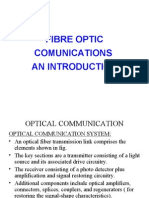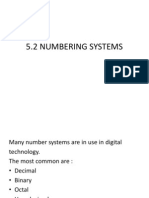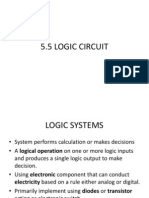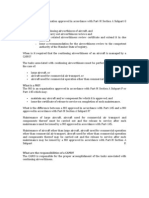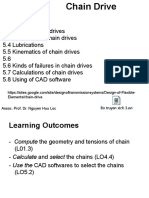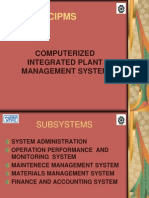5.
10 FIBRE OPTIC
�WHAT IS FIBRE OPTIC
Flexible, transparent fiber made of a pure glass (silica). It functions as light pipe, to transmit light between the two ends of the fiber. It is an opto-electronic component (sensitive to infrared, ultra violet that convert to electrical signal) Use in medical, telecomunication and aviation field.
��ADVANTAGE
Larger data carry up to 3300MHz Low loss of signal Smaller diameter, lighter-weight cables Cross talk negligible no effect to other cable(signal) Immunity to electromagnet interference Greater security immune to wiretapping Greater safety free from spark Low cost material sand Long life span double from conventional cable Greater reliability resistance to corrotion and temp
�DISADVANTAGE
Installation cost high Fragile than wire Required special equipment for testing Required special skill and equipment to splicing it
�OPERATION
Transmitter (Light Source) Optical Coupling
Receiver (Light Detector)
Transmitters:
Light-emitting diodes (LED's) and Injected Lasers Convert electrical signal to optical signal. To send the optical signal over an optical fibre
Photodiodes and Phototransistors. To convert optical signal back to an electrical signal
Receivers:
Optical Coupling: Opto-isolators and Optical fibres
�LIGHT
Light wave more shorter than electromagnetic wave (radio/radar). Velocity 3x108m/s, change depend on medium. Propogation of light :
Reflection Refraction Dispersion
�REFLECTION
The light reflect back with same angle if surface is smooth
The light diffuse reflection if surface is irregular/rough
�REFRACTION
Bending of light when passes through other medium
Air Diamond Ethyl Alcohol Fused Quartz Glass Optical Fibre Water
100 242 136 146 155 - 19 15 133
Index of refraction
�DISPERSION
Seperation of white light to the various color. Different color have a different wavelength, different velocity and different index of refraction.
�CABLE STRUCTURE
High strength and tension resistance Typically cable made in length of 1-3 km without splices.
Core - glass, polystyrene, polymethylmethacrylic. Cladding - glass, silicon or Teflon.
�TYPE OF CABLE
Wide graded index multimode optical fibre
Single mode step index optical fibre
Large-core plastic-clad silica optical fibre
�HOW IT WORK
Single Mode
Multimode
�ACCEPTANCE ZONE
�NUMERICAL APERTURE
Its a colecting power of an optical fibre Its value from 0 to 1, Larger NA mean the greater amount light accepted by fibre. NA is function of refractive index of the fibre. Define as NA = sinA
�PULSE SPREADING
The amount of acceptance signal have a limited frequency due to the pulse(light) is being dispers inside the cable. Dispersion tend to slow down the speed of the light. Two form of dispersion :
Chromatic disepersion : Different speed due to color Modal dispersion : Zigzag ray reach the end of cable later than straight ray
Total Dispersion = Chromatic + Modal
�CONSEQUENCES
The fastest the pulse travel, the worse spreading its get. Need to limit the frequency of the signal travel
�ATTENUATION
Reduction of signal strength due to : 1. Atomic Absorption : Atom of material absorb some of the light 2. Scatering by Flaw and Impurities : Depend on size of scatering particle inside the cable 3. Reflection by Splices and Conector : Some light are reflected back even for perfect splice or conector.
�JOINING OPTICAL FIBRE
Fusion Splicing
Allign manually using micromanipulators and microscope system. End of fibre are melt together using electric arc. Near perfect splice can lose as low 0.2dB
Mechanical Splicing
Two fibre end held together in splice equipment which automatically allign the two fibre. Clamp it and expose to ultra-violet light to cures the cement
�SPLICING ERROR
The end of fibre must be precisely line each other to enable light pass from one fibre to another. Typicall allignment error :
�FIBRE OPTIC CONNECTOR
2 Type Conector A and B, both have : - Allignment key and grooves - Guide pin and cavities - Color bands - Three start threads
A type : - 3 or 5 optical fibre - Multichannel - very low loss
B type : - For LRU - Multichannel - For more frequent conection and disconection
�FIBRE OPTIC IN AIRCRAFT
Advantage on aircraft :
Can carry more data Less weight Immune to electromagnetic radiation
Purpose:
Network system: (OLAN),(AVLAN),(CABLAN)
�AIRCRAFT NETWORK SYSTEM
Flight attendent
Keep sales data Enable and disable passenger functions Control the distribution of video entertainment Select boarding music
Video and menu screen Games Inflight sales catalogue Instruction for telephone call Ground to airplane telephone pages Special video channel selection
Passenger
�ONBOARD LAN
�CABIN LAN



